Lovers of Old Florida, architecture and history will love the Miami Beach Architectural District. But many are intimidated by the traffic and intensity of this very urban Miami area.
It’s understandable. I live 35 miles away, yet I consider a trip to Miami Beach an expedition.
The Miami Beach Art Deco district, which is formally named the Miami Beach Architectural District, is worth the trouble, however.

What’s special about the Miami Beach Architectural District?
The nine-square mile district contains the largest concentration of Art Deco buildings in the world. It includes more than 800 buildings built between 1923 and 1943. It’s a walkable, bikable low-rise community full of history, beauty and vitality.
What’s truly special about it, though, is that it is here at all.
While it was a famous and glamorous destination in its heyday, by the 1970s, it was shabby, full of rundown hotels that were home to working-class retirees, some of them Holocaust survivors. They sat in rows of chairs on the hotel porches and stared at the ocean. Few saw investment potential for the area, except real estate investors who knew oceanfront property could be redeveloped.
It took a visionary like Barbara Baer Capitman to see the beautiful lines of those hotels, the porthole windows, the terrazzo floors, the esthetic appeal and history of those buildings. At the time, the hotels were being torn down and Capitman rallied people to care. With others she chained herself to the front door of the Senator Hotel and had to be removed by police so the demolition could begin.
Several hotels were demolished, but from her efforts, and those of Miami Design Preservation League cofounder Leonard Horwitz, came an appreciation for these buildings and strong preservation laws that protect the district now. Capitman died in 1990 at age 70; Horowitz died of AIDS at age 43 in 1989.
But the Miami Beach Art Deco District achieved their vision, and exceeded it. Miami Vice, which aired 1984 to 1989, glamorized the pastel beauty of the area to all of America, and that was only the beginning. But by that time, both founders were gone.
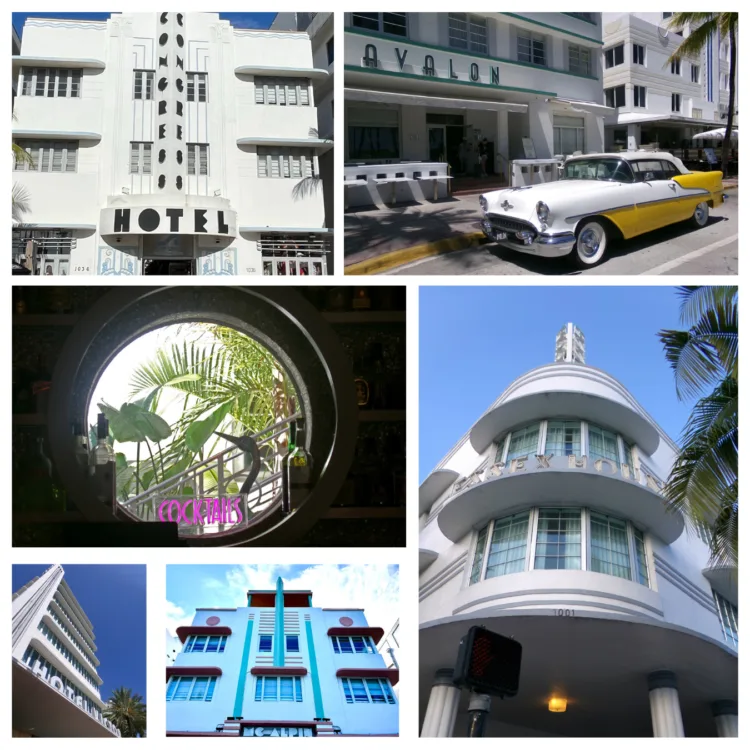
How to see and appreciate Miami Beach Art Deco buildings
The Miami Beach Art Deco district is, of course, free and open all hours of the day. Even a casual visitor with little information who walked along Ocean Drive would admire the pastel-hued hotels that face the expansive Lummus Park and the broad Atlantic Ocean beach with its iconic lifeguard stands.
We’re here to offer you some tips to help you go beyond that and to have a great time learning about and appreciating the Art Deco world of Miami Beach.
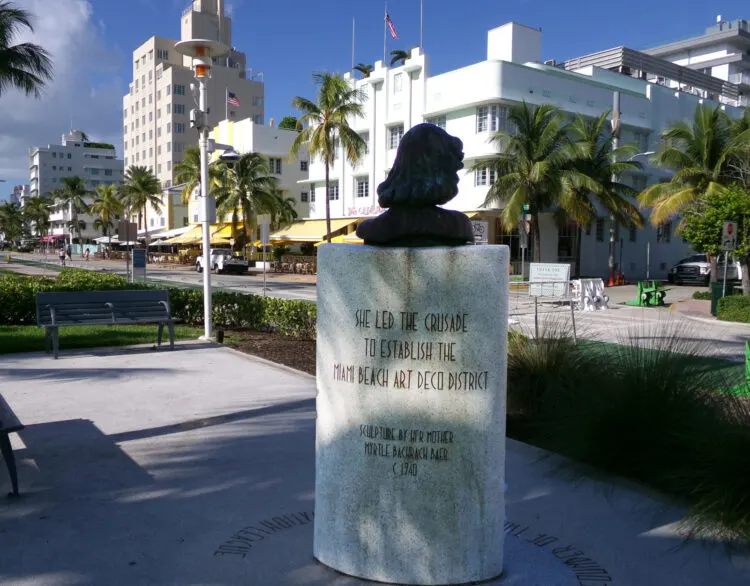
1. Park your car, and leave it there
With many one-way streets, narrow roads and lots of traffic, you want to ditch your car as soon as you can. Fortunately, the City of Miami Beach operates reasonably priced parking garages throughout the Miami Beach Architectural District. Here are four convenient to the district.
- 7th Street Garage: Between Washington & Collins on 7th Street, Miami Beach.
- 12th Street Garage: Just West of Washington Avenue on 12th Street, Miami Beach.
- 13th Street Garage: Just East of Collins Avenue on 13th Street, Miami Beach.
- 17th Street Garage at Convention Center Drive, Miami Beach.
The first three are especially well situated for the Miami Beach Architectural District. Parking is the best deal you’ll find in Miami Beach: $2 an hour for the first four hours in these garages. (Prices will differ for event parking.) Here’s a map of Miami Beach parking garages and lots.
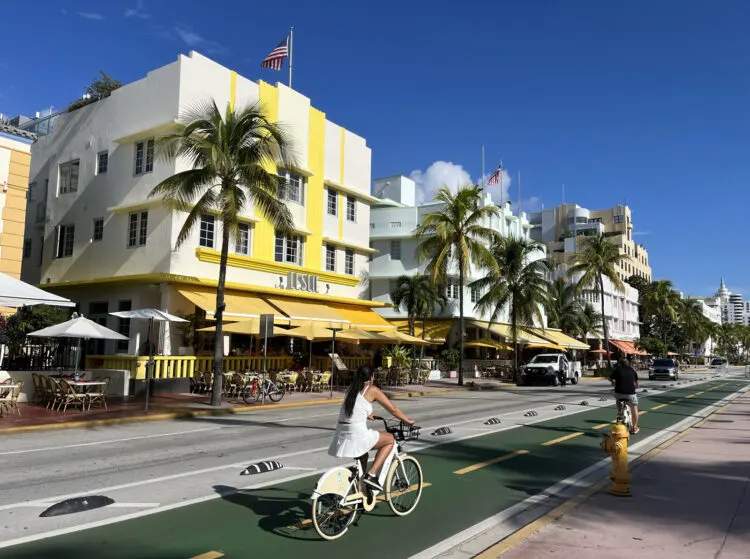
2. When touring Miami Beach, go by foot and/or the free trolley
Walking is the best way to appreciate Miami Beach’s Art Deco buildings, which are full of decorative elements. (That’s why it’s Art Deco.) One of the top pleasures of the Art Deco district is a leisurely stroll, enjoying unparalleled people watching as well as ogling the historic buildings.
If you stroll too far and can’t face walking back to your car, consider hopping on the free city-run trolley that operates from 8 a.m. to 11 p.m., seven days a week. Trolleys come about every 20 minutes. Here’s a map of the South Beach trolley loop. (Of course, Ubers and Lyfts are an option too.)
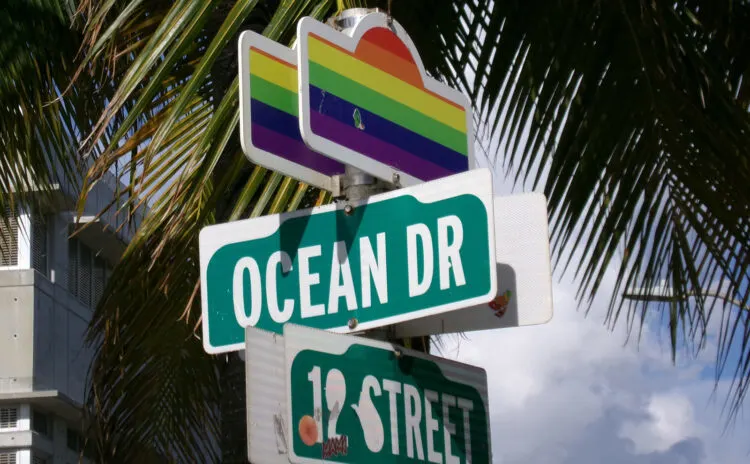
3. Visit the Miami Beach Art Deco Welcome Center first
Make the excellent Art Deco Welcome Center one of your first stops. It’s open from 9 a.m. to 5 p.m. daily and is operated by the Miami Design Preservation League (MDPL), which led the fight to save the Art Deco buildings, a fight that continues.
Here you can book a tour (more on tours in the next section), ask questions, visit a first-rate gift shop and learn about the architecture and history of Miami Beach.
Get a copy of the free Miami Beach Architectural Guide, a good map of the area with every significant building identified and labeled – #1 to #109!
I also recommend the Art Deco Museum. It’s $7 admission but free if you book your tour here. It provides excellent background on the elements of Art Deco architecture as well as the other architectural styles you will see here – MiMo, Mediterranean Revival and Contemporary.
After visiting the museum, you will have a good grounding in key architectural features and then it is more fun to admire the buildings – noting eyebrow windows on Art Deco buildings or kidney and amoeba shapes in the MiMo styles of the 50s, or the Old World arched windows of the Mediterranean Revival buildings.
Art Deco Welcome Center
1001 Ocean Drive
Miami Beach 33139
(305) 672-2014
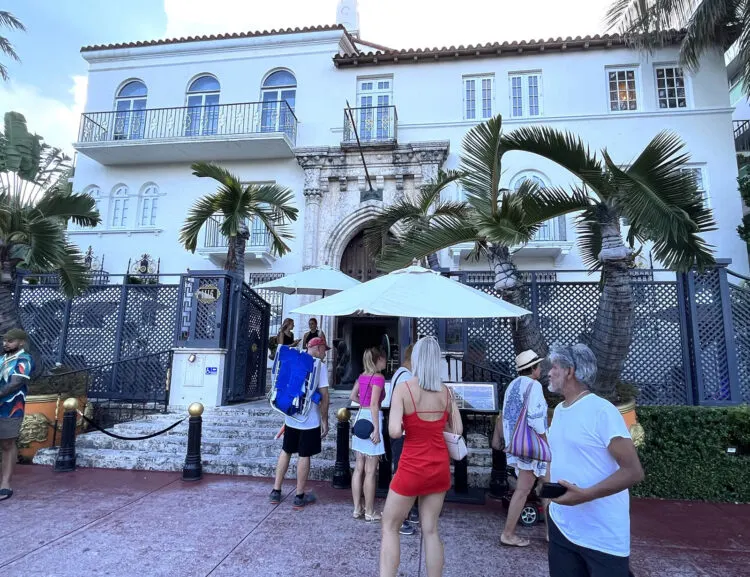
4. Take a tour; there are all kinds
There are many tours of South Beach for all tastes and levels of interest.
My husband and I thoroughly enjoyed the 90-minute Official Art Deco Walking Tour that is offered every day at 10:30 a.m. at the Art Deco Welcome Center. It’s $35 for adults (children under 12 are free) and includes admission to the museum. It is rated five stars on TripAdvisor with 1,500 reviews; it sells out on winter weekends.
The tour offers a good mix of Miami Beach history, architectural observations and discussion of popular interest. We paused, for example, for captivating story telling in front of Casa Casuarina, aka the Versace Mansion, where a serial killer gunned down Italian fashion designer Gianni Versace in 1997. When we passed the iconic 11th Street Diner, the guide chatted about how his friend had seen Madonna quietly dining there.
He also pointed out lots of details in the buildings we might have missed –how the very classic Art Deco design in the terrazzo floor of the Victor Hotel suggested train wheels, a transportation motif that is a hallmark of Art Deco design.
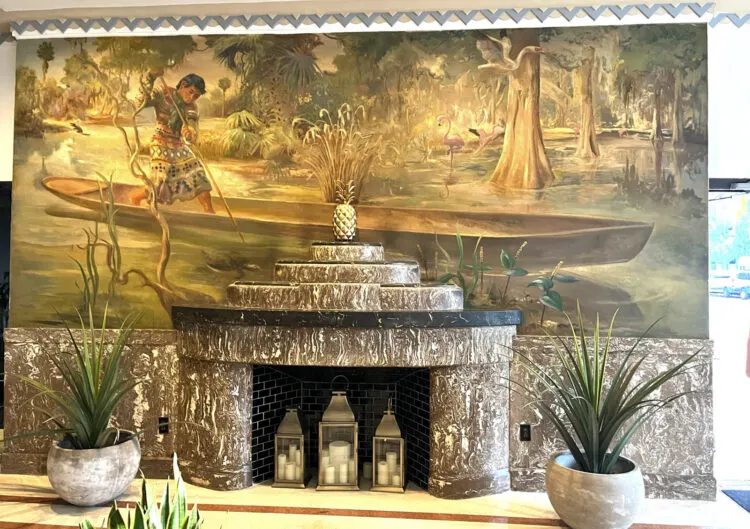
This may be the premiere Art Deco tour, but there are many alternatives.
You can buy an app for a self-guided audio tour that you can download to your phone. (Look for MDPL Tour in the app store. Once you download it, you will be asked to pay $15.)
Searching online, you’ll find a variety of other tours. We tried the Miami Art Deco Cocktail Tour, which was $65 each and included three cocktails inside historic hotel lobbies. It was a fun tour, though much lighter on information and more focused on entertainment than the Official Art Deco tour offered by the Preservation League.
We expected a small sample of several cocktails and perhaps a bit about the drinks themselves, but instead we were served three full-sized, strong cocktails. (It was a bit much, actually.)
A third intriguing option is a bike tour of South Beach. Our excellent guide for the Official Art Deco Walking Tour, Damain Rudys, was a volunteer on that tour, but his paying job is operating these bike tours. For $73, the tour includes bicycles.
Ocean Drive now has an outstanding bike path, which is separated from traffic and parking. With a bike, you can cover more ground, including two places I recommend as side trips – South Pointe Park and Española Way (see below).
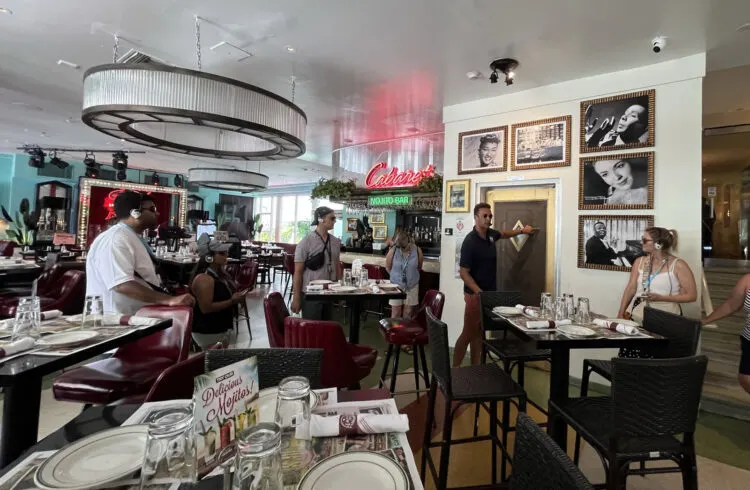
5. Go inside several buildings and perhaps have a drink in a historic hotel lobby
Tours and tourists march in and out of the Miami Beach Art Deco hotel lobbies, and you should too. Some of the wonderful Art Deco features that were saved are inside, including beautiful Old Florida murals on the wall by Earl LaPan, terrazzo floors with dazzling designs and fanciful light fixtures.
A few hotels that are considered to have significant interior features and are worth ducking inside:
- Park Central Hotel, 640 Ocean Drive
- The Colony Hotel, 736 Ocean Drive
- The Essex House Hotel, 1001 Collins Ave.
- The Victor Hotel, 1144 Ocean Drive
I was taking my college-age daughter and her friend into one of these hotel lobbies a few years ago. When we got outside, I got one of those “M-o-o-m!” groans. They were mortified I had lingered admiring the interior oblivious to R&B star Mary K. Blige and her entourage.
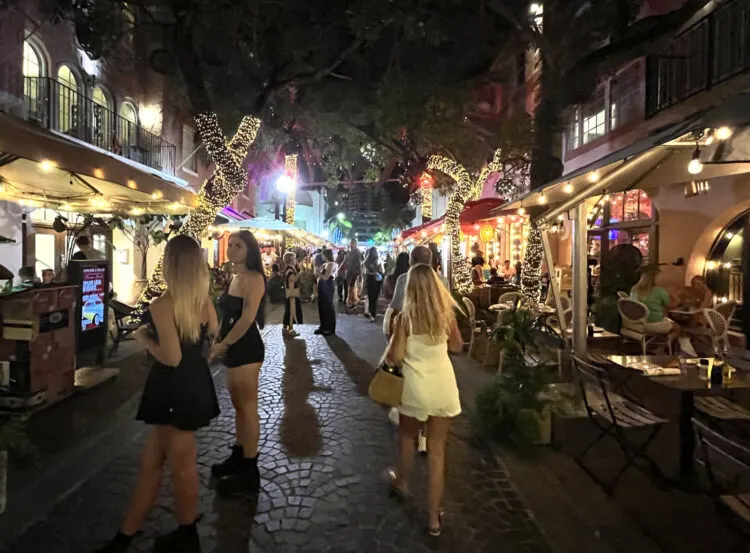
6. Have lunch or dinner in a historic spot
It won’t be hard to find a place to eat with a bit of history – every Ocean Drive hotel has a restaurant too.
I suggest you also consider three non-Ocean Drive historic spots.
In the northern end of the Miami Beach Architectural District is a treasure of Mediterranean Revival style, the “Spanish Village” of Española Way, built in 1925. The pedestrian-only street is lined with 20 sidewalk cafes offering a great variety of food and drink. It’s a lively, lovely place lit up festively in the evening. (Our paella at Españolita was excellent.)
The 11th Street Diner, 1065 Washington Ave., Miami Beach, is a 1948 aluminum-sided railroad dining car brought to Miami Beach in 1992. It fits right in and offers classic comfort food in an unpretentious setting. It was featured on Guy Fieri’s show “Diners, Drive-Ins and Dives.”
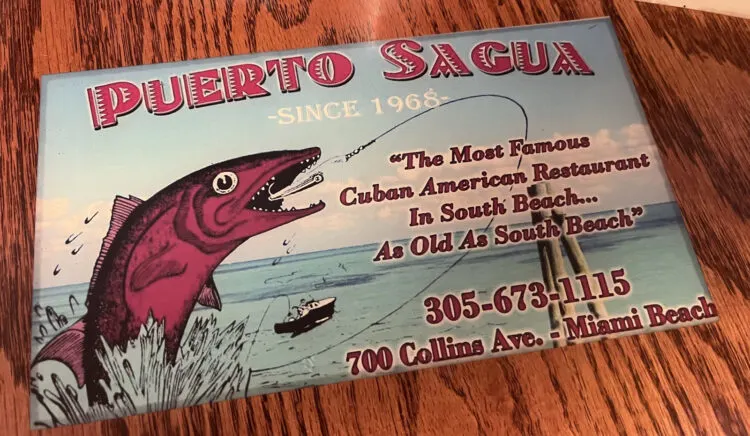
We chose to lunch in an Old School classic Cuban restaurant, Puerto Sagua, 700 Collins Ave., Miami Beach, which has been serving folks here since 1968. It’s basically a mom-and-pop Cuban diner that somehow survived two blocks from Ocean Drive. We had good Cuban sandwiches.
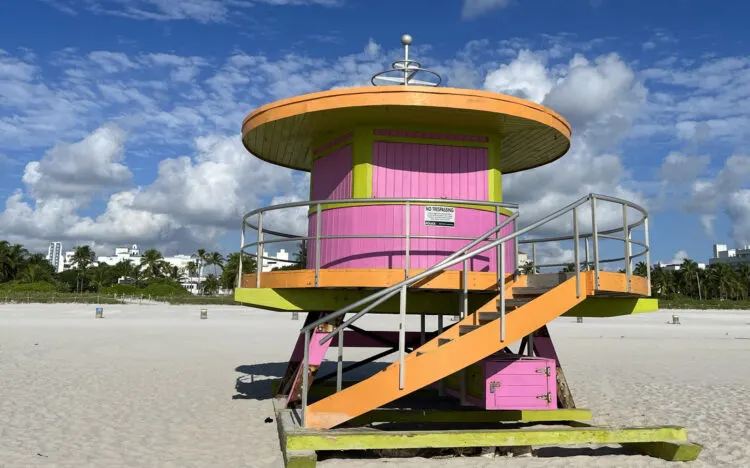
7. Want more to do? Explore these three special places
If you spend a weekend, consider adding these to your itinerary:
The Wolfsonian Museum, 1001 Washington Ave., Miami Beach. Located in the heart of the Art Deco district, it’s easy to stop in here for some air-conditioning and quiet. Its fascinating exhibits are all about how art and design can be used for persuasion, including propaganda. I’ve visited several times and always found it thought-provoking and stimulating.
Lincoln Road, located at the northern end of the Miami Beach Architectural District. The eight-block-long pedestrian mall was designed by famous Art Deco architect Morris Lapidus. It offers upscale shopping and restaurants. Our favorite spots are gone, but we still love it for the architecture.
South Pointe Park, 1 Washington Ave., Miami Beach. At the southern tip of Miami Beach, there is a promenade and park with stunning views of the beach and the ocean with its cruise ships, downtown Miami’s skyline and Fisher Island. There’s a splash zone for kids, picnic tables, benches and a fishing pier. It’s a place made for photographs and postcards.
Art Deco Weekend, Miami Beach, every January
Created four decades ago by the Miami Design Preservation League to showcase the beautiful Art Deco buildings of South Beach, it includes live music from the Art Deco era, a classic car show, walking tours and fascinating talks.
Finally, people ask is Miami Beach safe?
Miami is a big city, where you should be aware of your surroundings and vigilant about your belongings. This story has a good analysis of statistics on the topic of Miami Beach and safety. From it, I would conclude: It’s about as safe as any urban area in the US, which means, keep your wits about you, particularly after dark.
Others places to discover in Miami from Florida Rambler
Stiltsville: Miami icon by boat for awesome views & history
The Kampong: Coconut Grove gardens and a fascinating Floridian
Virginia Key: Kayaking with Miami skyline, historic stadium
Oleta River State Park: Remarkable island getaway in Miami
Old Cutler Trail: Fun bike path past iconic Miami places
Deering Estate: 6 things that make this getaway delightful
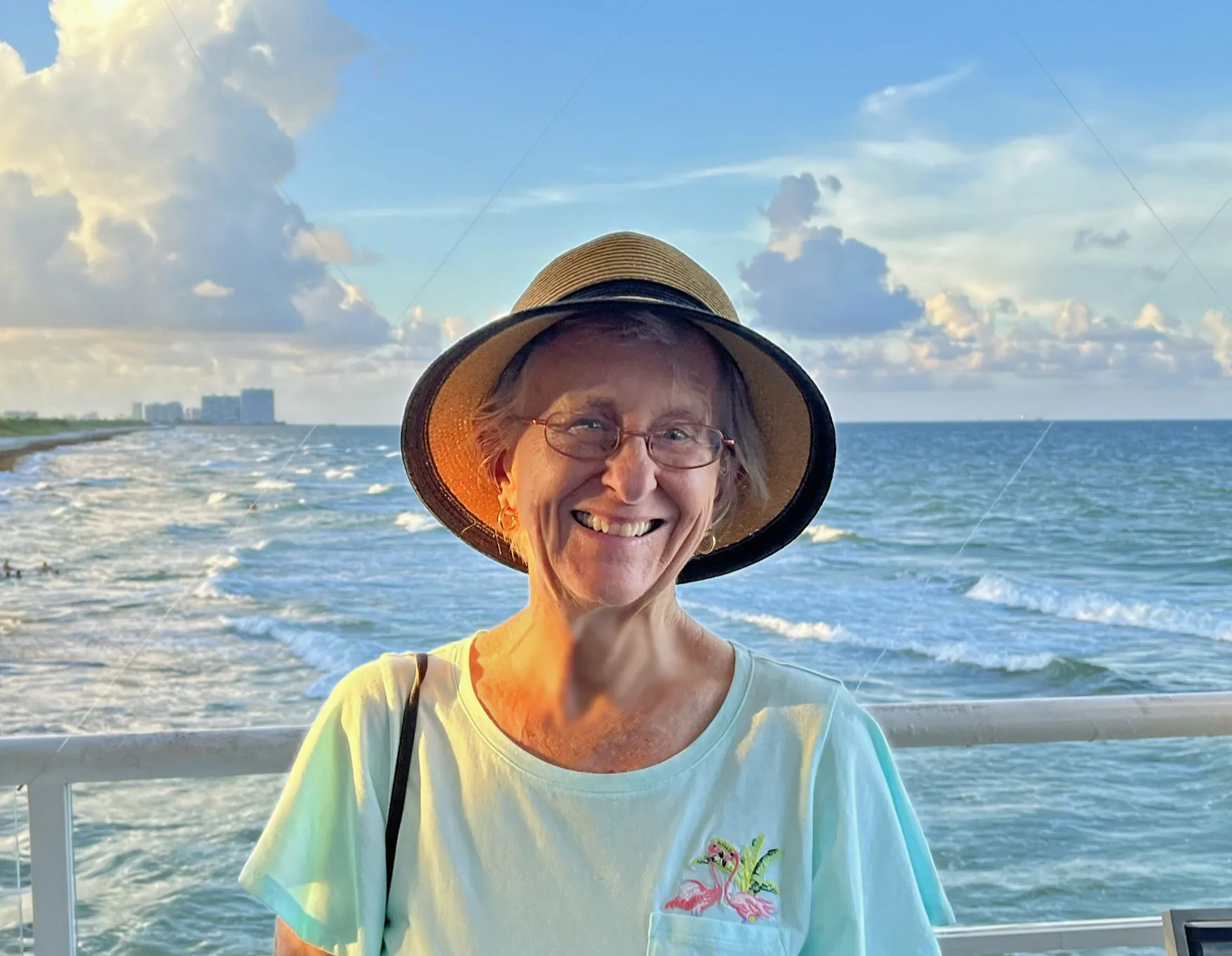
The author, Bonnie Gross, travels with her husband David Blasco, discovering off-the-beaten path places to hike, kayak, bike, swim and explore. Florida Rambler was founded in 2010 by Bonnie and fellow journalist Bob Rountree, two long-time Florida residents who have spent decades exploring the Florida outdoors. Their articles have been published in the Sun Sentinel, the Miami Herald, the Orlando Sentinel, The Guardian and Visit Florida.

Deborah K. Wood
Saturday 30th of September 2023
I really enjoyed this article! I’m looking forward to visiting the area this fall. Thanks